
Japan
For a full scale picture, please click on the picture shown !
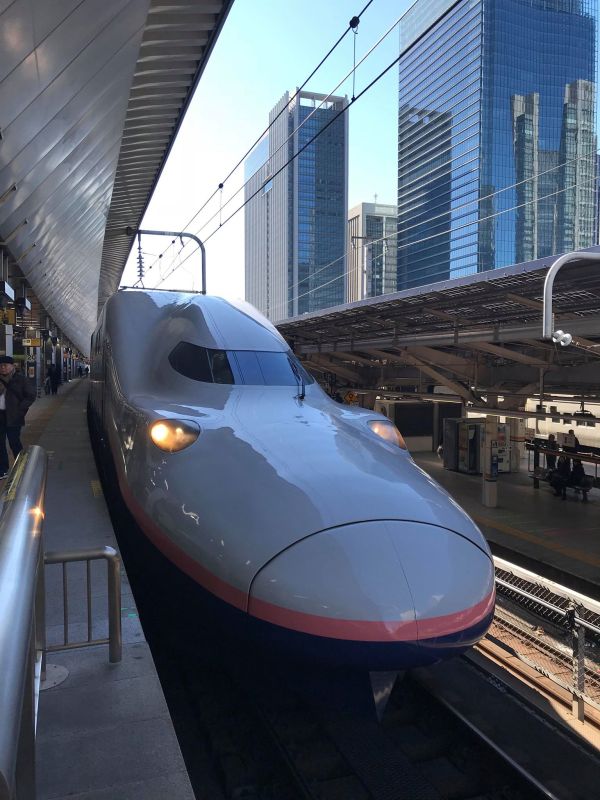
Japan is a proud user of its fast "Shinkansen" trains. This one is a Joetsu Shinkansen type E4 of Japan Rail West.
This one is connecting Tokyo with Niigata at 240 km/h on normal gauge 1435 mm rails using 25 kV AC. The type entered service in 1997.
Picture from Tokyo station 14.1.2018 by Vesa Kailanen.
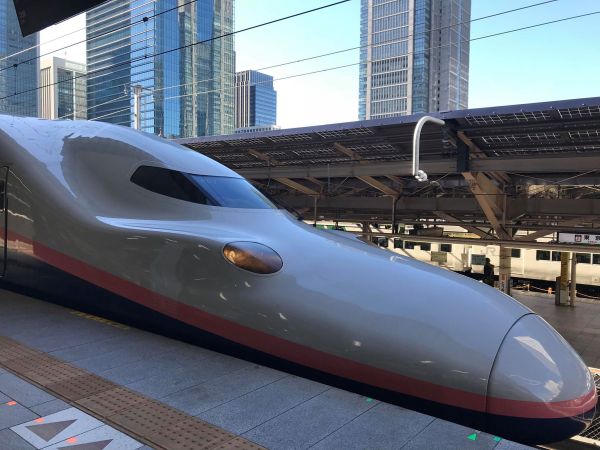
Some call it modern, some say it's like a Formula one, some call it just plain ugly. A Joetsu Shinkansen E4.
Picture from Tokyo station 14.1.2018 by Vesa Kailanen.
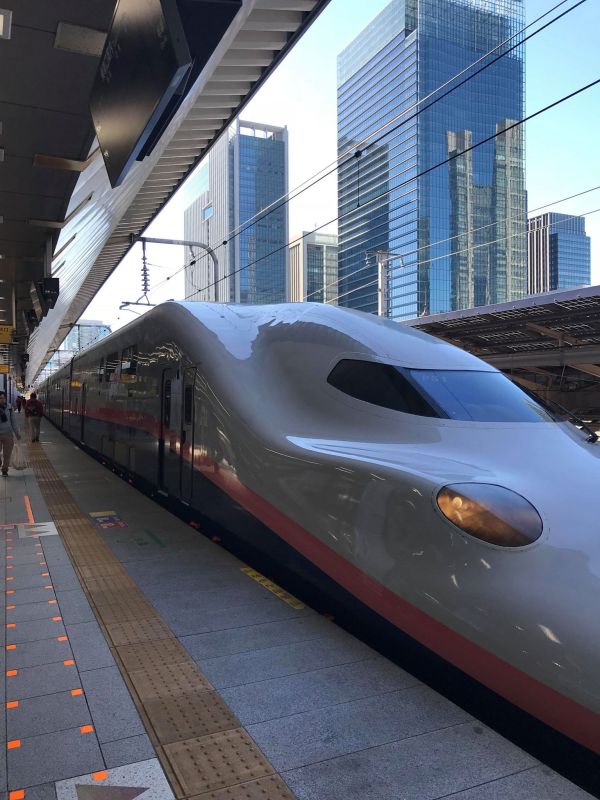
Being a doubledecker train, the Joetsu Shinkansen E4 is surprisingly low in its profile. See how low down the downstairs windows are located. OK, granted, it is a
high platform, but nevertheless.
Picture from Tokyo station 14.1.2018 by Vesa Kailanen.
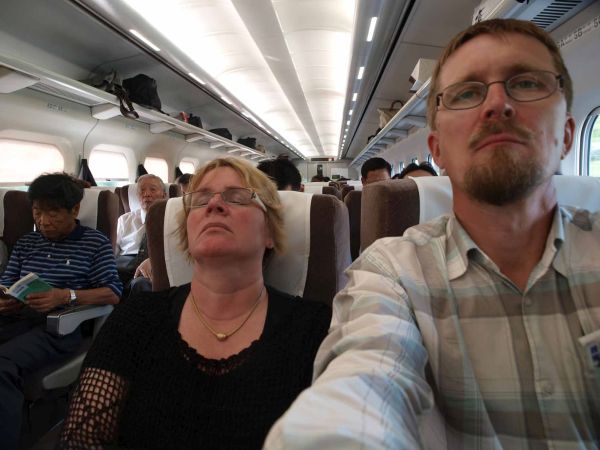
Taking a selfie while travelling with a Shinkansen train. The bearded gentleman who takes the picture is medical doctor Heikki Hemmilä.
The train is a Japanese Rail JR West 300 series Shinkansen on the Tokyo to Hakone route.
Picture by Heikki Hemmilä 13.6.2009.
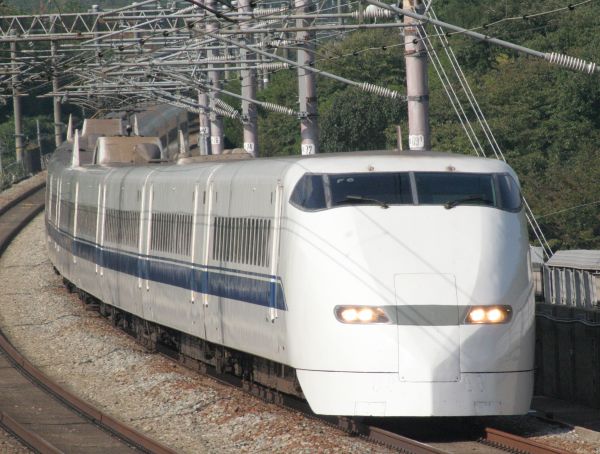
This is the Japan Rail West 300 series Shinkansen train. The inside view picture above is from a similar train.
Picture by user "Mitsuki-2368" of commons.wikimedia.org 8. October 2008. "Permission is granted to copy, distribute and/or modify this
document under the terms of the GNU Free Documentation License, Version 1.2 or any later version published by the Free Software Foundation;
with no Invariant Sections, no Front-Cover Texts, and no Back-Cover Texts. A copy of the license is included in the section entitled
GNU Free Documentation License."
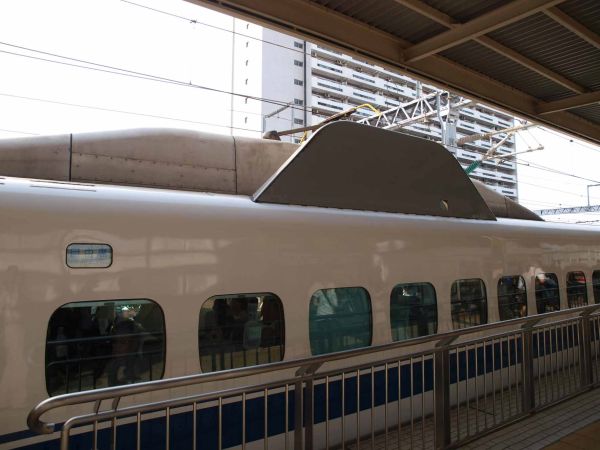
Outside view of the same class 300 Shinkansen train as in the inside view picture above.
Picture 13.6.2009 by Heikki Hemmilä.
N'EX Narita Express of JR East
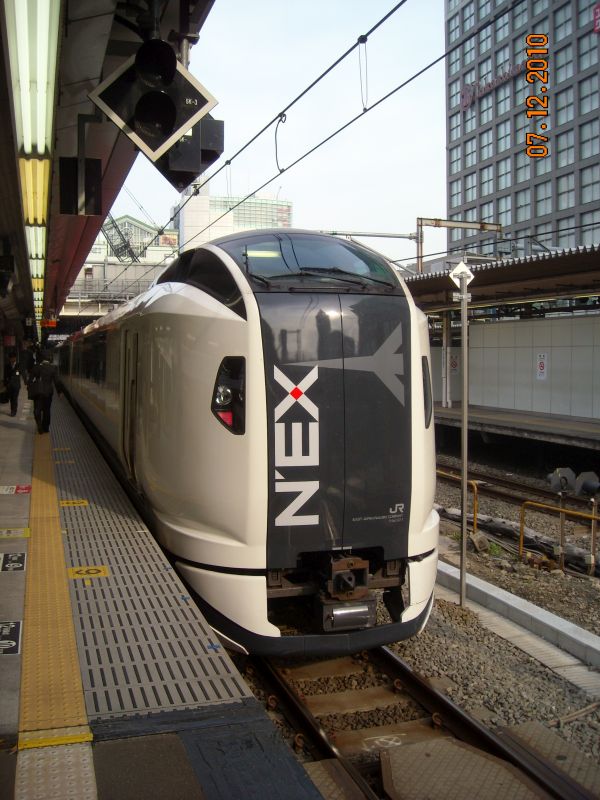
N'EX or Narita Express is a fast train that links the Narita Airport to Tokyo, Yokohama and Shinjuku. This is a six coaches long so called
E259 series train. They were first taken in use in 1991 and they are operated by JR East (East Japan Railway Company). They run on 1067 mm
gauge tracks with 1500 V DC. Max speed is 130 km/h.
Picture from Tokyo 7.12.2010 by Aarre Viiala.
Odakyu Electric Railway
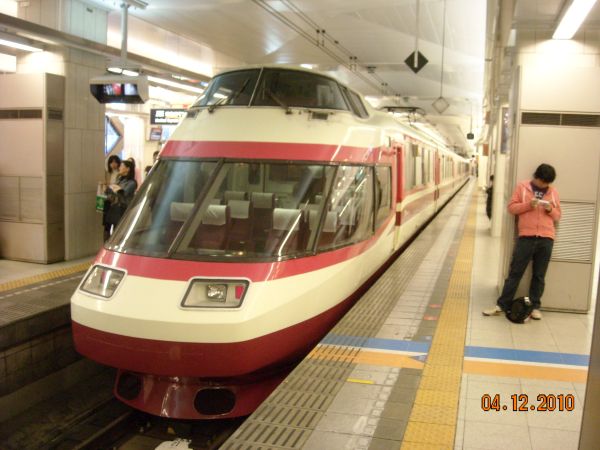
Romancecar is the marketing name for Odakyu Electric Railway Co's limited express luxury tourist services south-west of Tokyo, to mountain
resorts such as Hakone and Gotemba (Mount Fuji), and beaches such as Odawara and Enoshima. This train type was the Odakyu 10000 series HiSE
which was used from 1988 to 2012 on the Shinjuku to Hakone Romancecar services.
Picture from Shinjuku 4.12.2010 by Aarre Viiala.
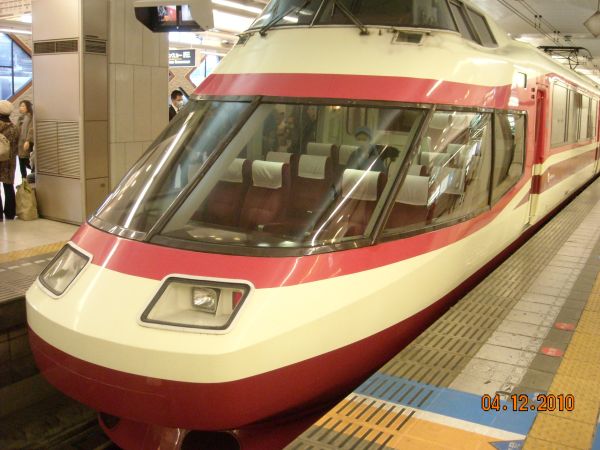
Closeup of the Romancecar 10000. The driver's seat was elevated so that the tourists would have an unrestricted view to both the tracks and
fine scenery ahead.
Picture from Shinjuku 4.12.2010 by Aarre Viiala.
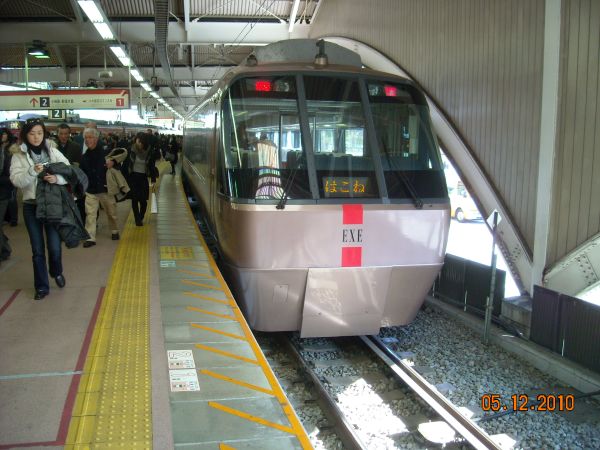
This is the Odakyu class 30000 EXE electric multiple unit. They run on Shinjuku (in Tokyo) to Hakone seervices (among others). It's a 10
coaches long set built on 1996 to 1999. It runs on 1067 mm gauge tracks with 1500 V DC with a max speed of 110 km/h. The company has 14 of
these trainsets.
Picture from Shinjuku 5.12.2010 by Aarre Viiala.
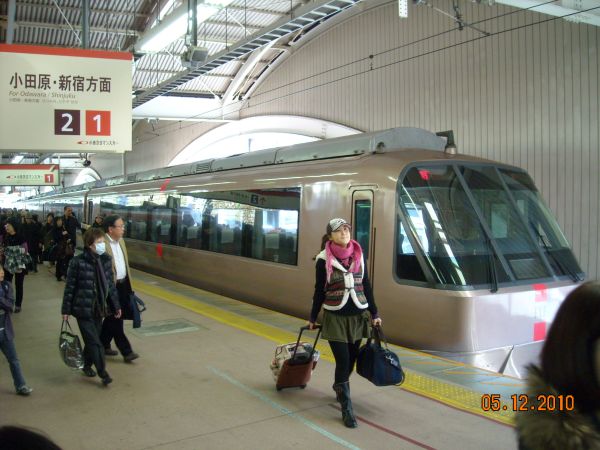
Side view of the same Odakyu's class 30000 EXE train.
Picture from Shinjuku 5.12.2010 by Aarre Viiala.
Seibu Railway Company
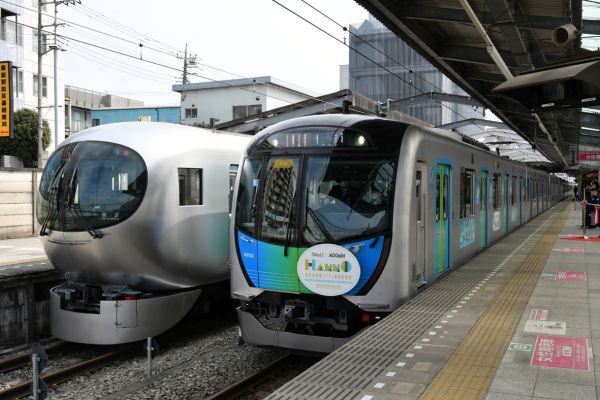
The Seibu Railway Co. is a private railroad company operating near Tokyo. Seibu has 176,6 km of its own network and it operates several
busy, frequently stopping commuter train services as well as some express services in the Tokyo and Saitama Prefectures. Seibu's network
is connected to ther railroad networks via the Tkyo metro.
Japanese people are especially fond of the Moomin characters. These are children's book, film and comic book characters created by the Finnish
author and artist Tove Jansson. The Moomins are said to live in their own village, the Moomin Valley. The first Moomin Valley as a tourist
attraction was opened near Uusikaupunki in western Finland. But there's also now a Japanese Moomin Valley park in Japan. It can be
reached using Seibu's train service which links the Ikebukuro station to the station called Hanno, close to the Moomin park.
Here on the right a Seibu train ready to leave towards Tokyo. This train is of the Seibu's class 4000. They have been in service since March 2017.
The train on the left is one of Seibu's new class 001 "Chichibu".
Picture from Hanno station, Saitama, 5.3.2023 by Akihiro Nakamura.
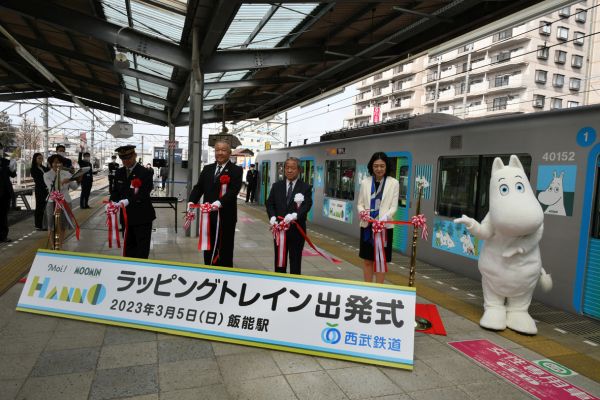
The Moomin himself has come to greet tourists together with some local authorities.
Picture from Hanno station, Saitama, 5.3.2023 by Akihiro Nakamura.
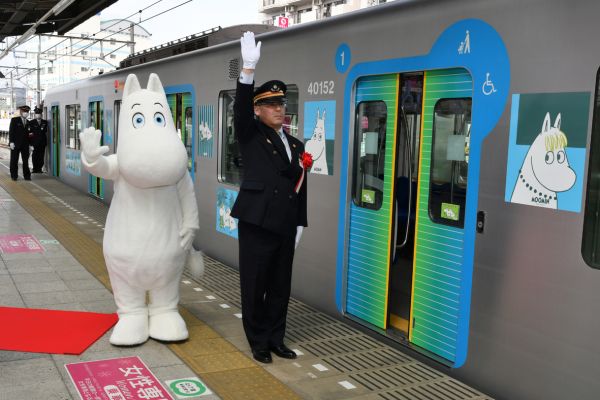
The Moomin and the station master are signaling that this train is ready to leave.
Picture from Hanno station, Saitama, 5.3.2023 by Akihiro Nakamura.
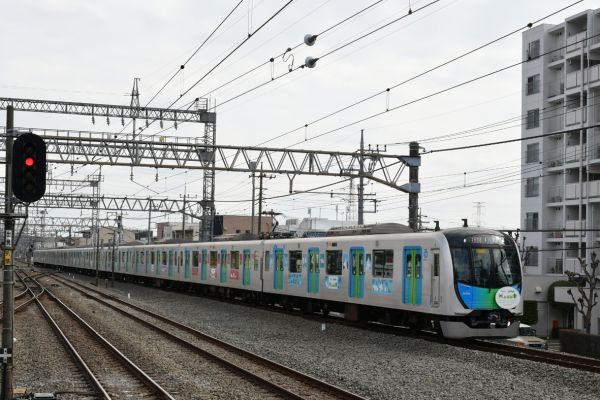
Seibu Railways' M05 no.3658 underway.
Picture 5.3.2023 by Akihiro Nakamura.
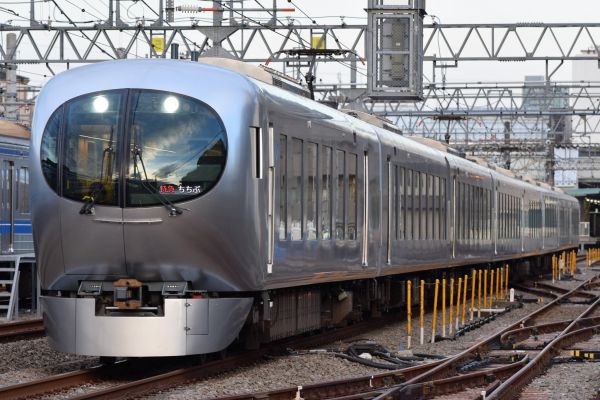
Seibu Railways' class 001. These new trains with exceptionally large panorama windows have been designed by the architect Kazuyo Sejima
and built by Hitachi. The train type is also known as "Laview" or Hitachi A-train. The first ones entered service in 2019 and they are to
replace older class 10000 series trains on the Seibu Ikebukuro Line and the Seibu Chichibu Line. These are special express trains which
require the passengers to buy more expensive special tickets.
Picture 18.7.2019 by the wikimedia user ンョ゛ハー゛. The picture has been published under the
Creative Commons Attribution-Share Alike 4.0 International license.

